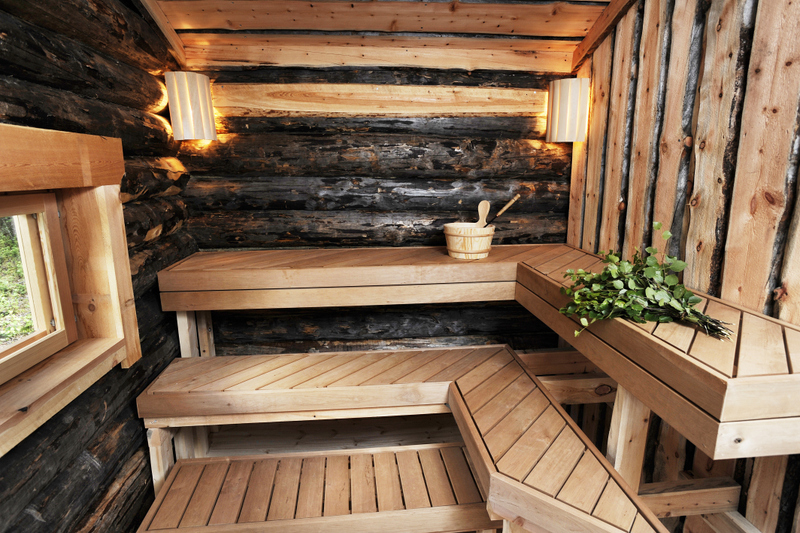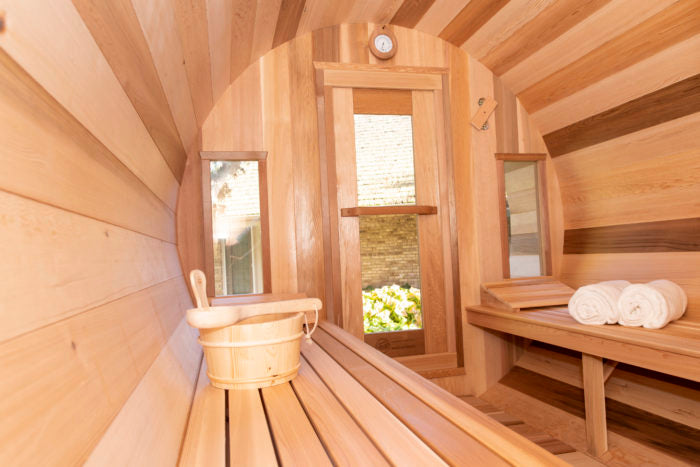Traditional Sauna Things To Know Before You Buy
Traditional Sauna Things To Know Before You Buy
Blog Article
9 Easy Facts About Traditional Sauna Shown
Table of ContentsThe Buzz on Traditional SaunaThe Of Traditional SaunaGetting The Traditional Sauna To WorkHow Traditional Sauna can Save You Time, Stress, and Money.Traditional Sauna Fundamentals Explained
The majority of the weight shed in a sauna is water loss and is re-gained upon rehydrating. Nevertheless, undeniably sauna can be a fundamental part of a healthy and balanced weight reduction program. To check out the distinctions between conventional and IR saunas, I will divide these into verifiable, academic, and fabricated distinctions.Therefore, the hottest factor in the saunawhich is at the ceiling directly over the sauna heateris usually between 185 and 190 F. Claims that a standard sauna goes beyond 200 F is just not real and not relevant for electric saunas offered in the United States. The temperature level for a far-infrared sauna is typically set in between 120 and 140 F; nevertheless, unlike the standard sauna, the goal in and IR area is not to accomplish a heat.
Due to this, the temperature level difference is almost irrelevant, because profuse sweating causes both sauna kinds, however the method of heating up the body is different. In an IR sauna the bather will certainly feel hot and will certainly sweat profusely, however at a lot lower temperature levels (Traditional Sauna). Therefore, if the goal is to invest longer periods of time in the sauna, the IR sauna is an excellent choice
When a traditional sauna has actually been correctly heated up, the sauna walls are warm, the air temperature has achieved established temperature level and the rocks are extremely warmed. As an interesting side note, the warmed wall surfaces and the rocks are releasing far-infrared warm, combined with the warmed air, to create an "covering warmth".
The Only Guide to Traditional Sauna

When the heat is attained, the components cycle on and off to preserve the high temperature level. The majority of standard sauna users enjoy pouring water over the rocks to create vapor to raise sauna humidity degrees. The advantages of putting water over the rocks consist of: making the room extra comfy, moistening the nasal flows, and enabling the use of aromatherapy by blending essential oils with the water.

When Continue the energy goes into the body, it creates the body temperature level to raise and eventually causes sweating. In an infrared sauna it is very important for the emitters/heaters to stay on virtually regularly. Given that there is no mass of rocks to maintain warmth, the sauna will cool down if the emitters shut off.
As pointed out over, the sauna bather in an infrared room intends to position himself before operating emitters to get optimal benefit from the warmth. The home Bonuses heating time for both spaces can be really various, depending upon how the rooms are made use of. For a typical sauna, a bather must enable 30-40 minutes for the area to accomplish a desired temperature and to correctly pre-heat the rocks.
Traditional Sauna Fundamentals Explained
A well built sauna will generally achieve a temperature of 150-160 F in about 30-40 mins. For hotter temperature levels, the area might require to warmth for a longer duration.

Conventional saunas often tend to be larger (for this reason utilize even more electricity) than infrared saunas, although conventional saunas are definitely readily available in one and two individual dimensions as well. For a two-person standard sauna, 5x6 or 5x7 size is most popular. The leading bench can easily seat two or 3 people and is also enough time to relax throughout the sauna session.
The Definitive Guide to Traditional Sauna
The average expense per kWH of electrical power in the united state is around $0.11, so a 4.5 kW heating system will certainly set you back around $.50 to compete one hour, if the heater runs continuously for one hour. Normally a sauna heating system will run for 75% of the initial hour and 50% of succeeding hours on since the components cycle once the set temperature is accomplished.

There is a seldom reviewed difference in the social experience in between the 2 areas. While our culture has actually this article shed several of the social advantage of the standard sauna experience, it can be extremely socially satisfying (Traditional Sauna). From family members time in the sauna, to heart-felt discussions with loved ones, to sauna partiesthe traditional sauna experience can lead to intimate socializing
The Ultimate Guide To Traditional Sauna
Many greater end infrared areas consist of tinted light therapy, sound systems and full-glass fronts.
Report this page